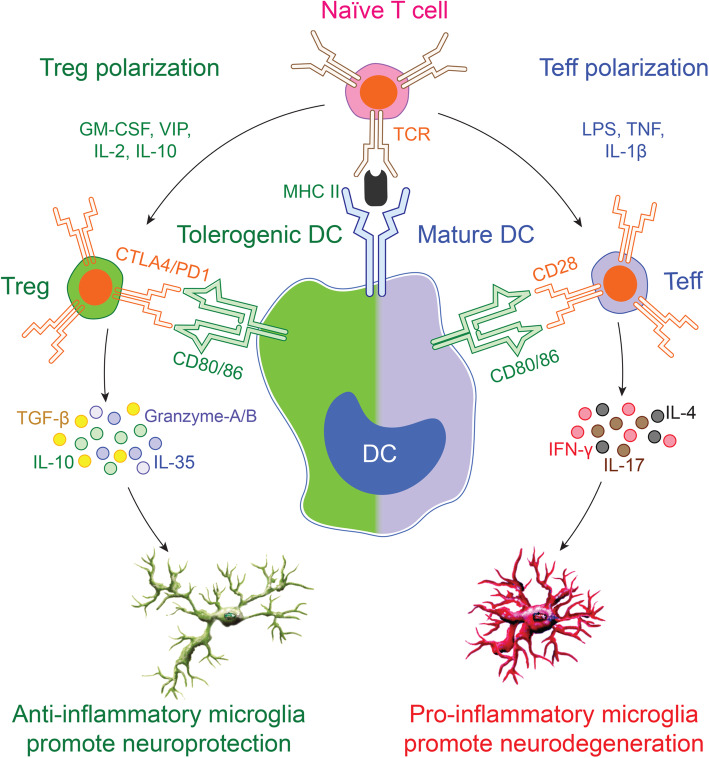Fig. 1.
DCs and T cell polarization. Immature DCs take up antigen, process and present it to immunocytes. Antigen uptake induces maturation signals in DCs in cooperation with the upregulation of co-stimulatory molecules. Mature DCs encounter naïve T cells through MHCII-T cell receptor (TCR) interactions, leading to T cell activation, Teff differentiation, and secretion of pro-inflammatory molecules (IL-10, IL-35, TGF-β, granzymes, etc.). In contrast, some DCs can maintain central and peripheral immune tolerance called tolerogenic DCs. The tolerogenic DCs exhibit low levels of costimulatory molecules and as such, provide insufficient stimulatory signals to naïve T cells to induce Treg and anti-inflammatory cytokines (IL-4, IL17, IFN-γ, etc.). Tregs suppress Teff function and proliferation to maintain immune tolerance. Teffs secreted molecules govern pro-inflammatory microglia polarization. In contrast, Tregs favor anti-inflammatory microglia polarization, supporting neuroprotection. Balance between Teffs and Tregs is essential to maintain homeostasis while their imbalance leads to neurodegeneration through microglia responses

